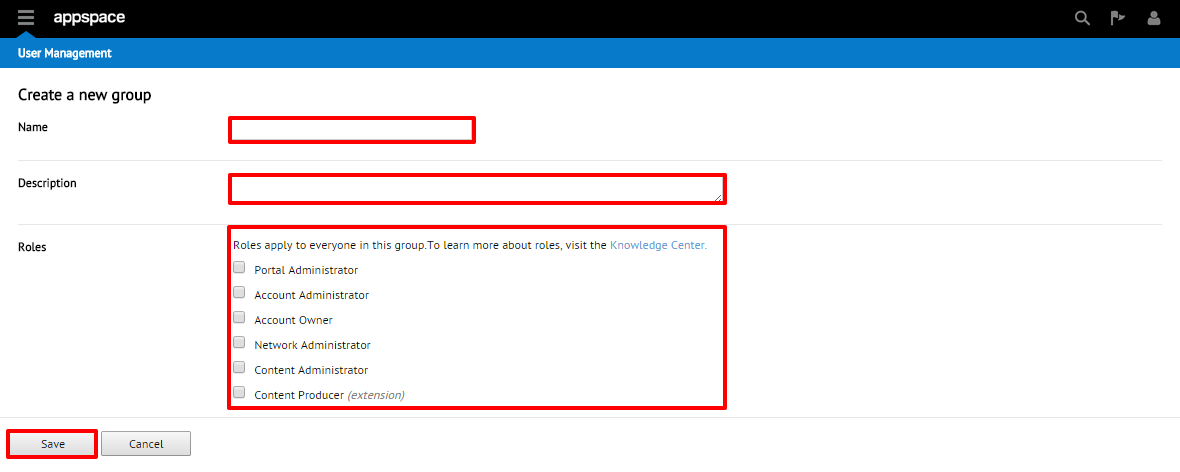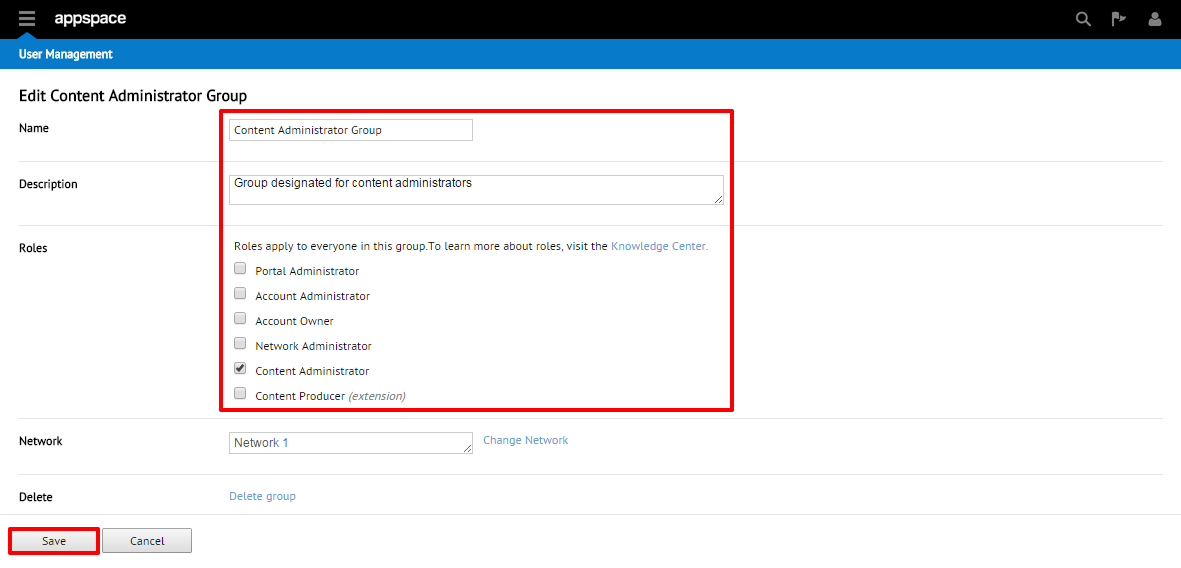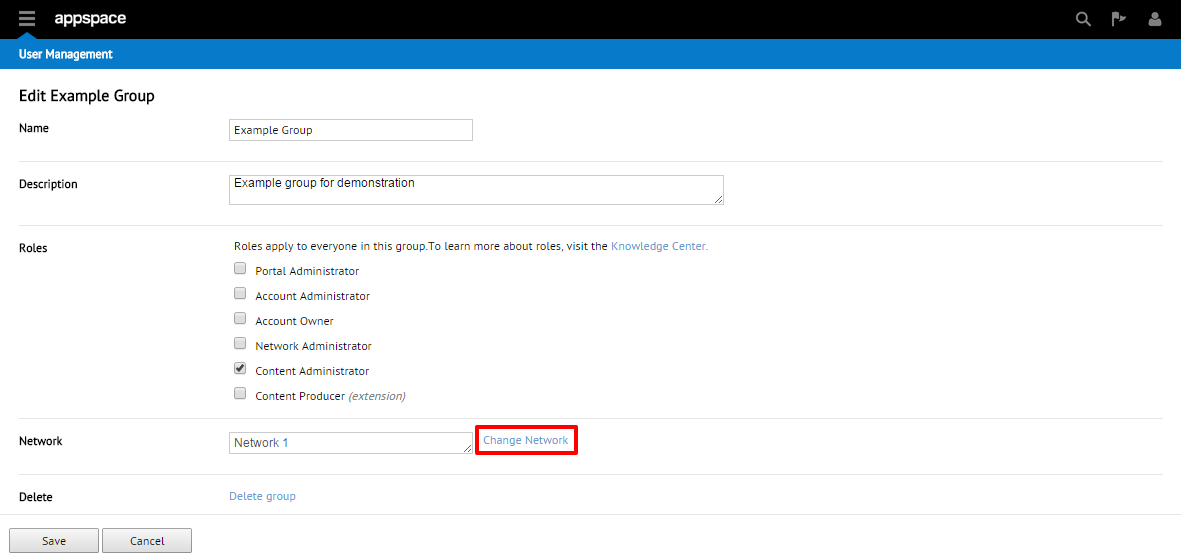Cloud: Creating and Managing User Groups
Overview
This guide outlines the steps to create, edit, delete, as well as move existing user groups to different network locations on your Appspace server.
Pre-requisites
- The ability to create and manage user groups require at minimum the Portal Administrator, Network Administrator, or User Management role
Creating New User Groups
Step 1
From within the User Management extension, begin by identifying the desired parent network (or sub-network) for which the user group is to be created under. Click to select the network (or sub-network) from the Network section. You should see the Groups section reflect the selected network (or sub-network) immediately.

Step 2
Click on the + (Add User Group) icon to begin adding a new user group to this network (or sub-network).

Editing Existing Groups
Deleting Existing Groups
Step 1
From the home page of the User Management extension, begin by selecting the group for which you wish to delete (you will likely first have to select the appropriate network from the hierarchy tree). Click on the pencil (Edit group) icon to be taken to the Edit Group page.

Step 3
You should be presented with a Confirmation (warning) dialog with information regarding how the group deletion will affect the server. Once you’ve confirmed you’ve selected the proper group to be deleted, click the OK button to continue.
Warning
Be sure to carefully review the users, contents, and applications that will be affected by this deletion before permanently removing them from the system.
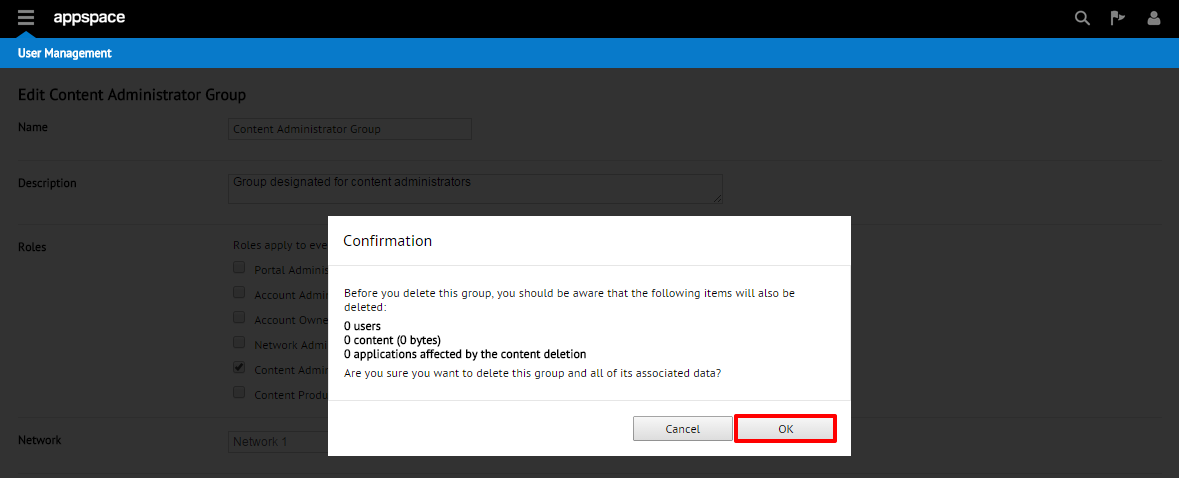
One final confirmation window will prompt you to enter your password to complete the group deletion process. Enter your account password and click Confirm. The group (and all of its users and content) will now be removed from Appspace.
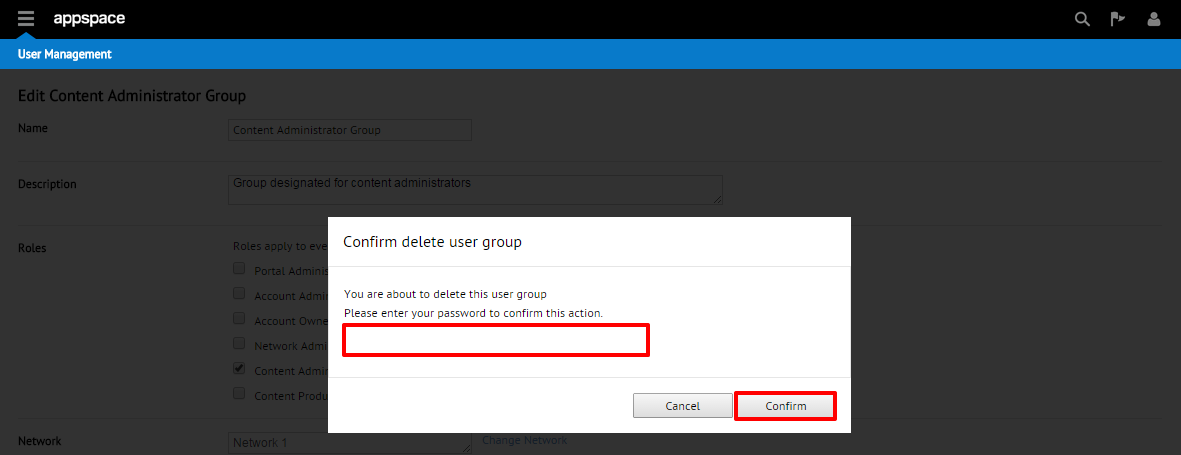
Moving User Groups Across Networks
Step 1
From the home page of the User Management extension, begin by selecting the group for which you wish to move (you will likely first have to select the appropriate network from the hierarchy tree). Click on the pencil (Edit group) icon to be taken to the Edit Group page.

Step 3
A new window should appear that contains the Network Tree. Select the new (target) destination network for which you would like to move the user group to. You may also utilize the search bar to more quickly find the network if you know the exact name. Once the new network has been selected, click OK.

You should see another dialog pop-up asking you to confirm moving the group and the resulting impact (such as the number of users, amount of content, or applications that will be affected). Click Confirm to proceed.

Step 4
You should be returned to the Edit Group page and notice that the newly selected (target) network now appears on the Network field. Click Save to confirm and complete the user group move process.
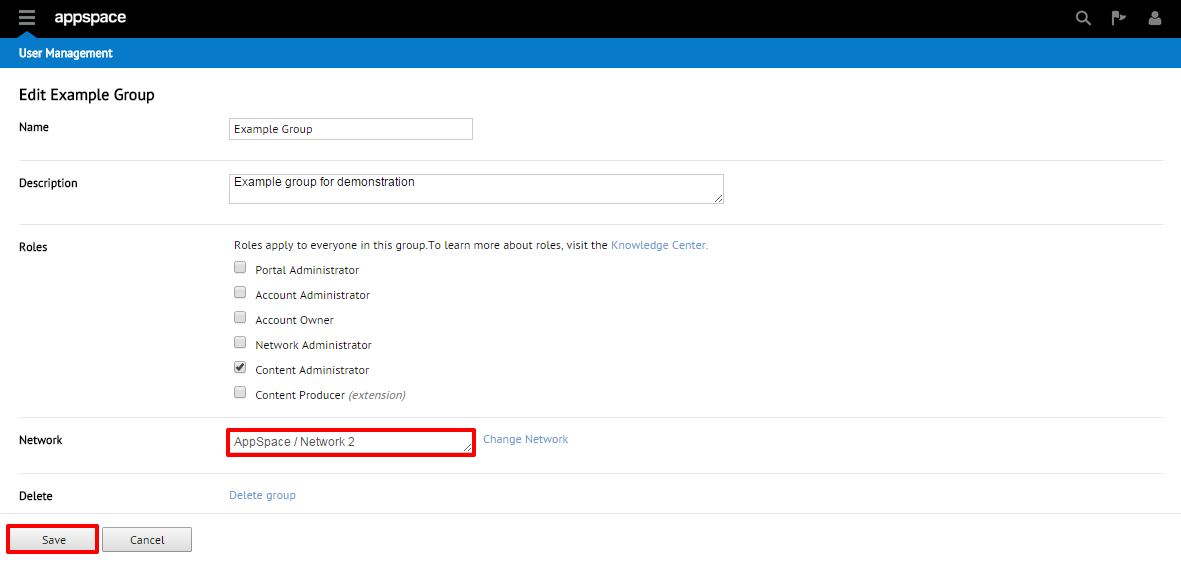
Back on the main User Management dashboard under the Group hierarchy tree, you should now see the user group moved/relocated (as well as all users within the group) in the new network.

